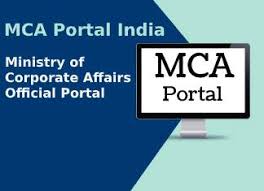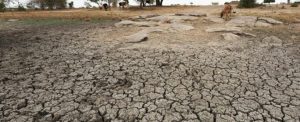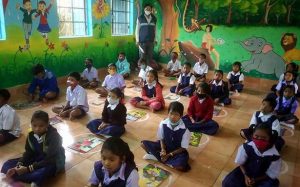Today’s Current Affairs: 20th June 2025 for UPSC IAS exams, State PSC exams, SSC CGL, State SSC, RRB, Railways, Banking Exam & IBPS, etc
Table of Contents
MCA21 Portal:
The Ministry of Corporate Affairs (MCA) has waived additional filing fees for 13 key e-forms after announcing a three-week shutdown of its MCA21 portal to complete the nationwide migration from Version 2 (V2) to the new MCA21 V3 platform.
- The Ministry of Corporate Affairs (MCA) launched the MCA 21 portal
- The portal enables secure and easy access to MCA services in an assisted manner for professionals, corporate entities, and the general public.
- The MCA21 application is designed to fully automate all processes related to the proactive enforcement and compliance of the legal requirements under the Companies Act, 1956, Companies Act, 2013, and Limited Liability Partnership Act, 2008.
- This will help the business community to meet their statutory obligations.
- The MCA 21 portal aims at interoperability with the National e-Governance Services Delivery Gateway (NSDG).
- The MCA21 application offers the following.
-
- Enables the business community to register a company and file statutory documents quickly and easily.
- Provides easy access to public documents
- Helps faster and effective resolution of public grievances
- Helps registration and verification of charges easily
- Ensures proactive and effective compliance with relevant laws and corporate governance
- Enables the MCA employees to deliver best-of-breed services
-
World Investment Report 2025:

India rose a position to rank 15 among top global destinations for foreign direct investment (FDI) in 2024, despite a marginal dip in inflows at $27.6 billion, according to the UN Trade and Development (UNCTAD)’s World Investment Report 2025.
- It is an annual report published by the UN Conference on Trade and Development (UNCTAD).
- It focuses on trends in foreign direct investment (FDI) worldwide, at the regional and country levels, and emerging measures to improve its contribution to development.
Highlights of 2025 Report:
- Overall, global FDI fell by 11 percent in 2024, marking the second consecutive year of decline and confirming a deepening slowdown in productive capital flows.
- Although global FDI rose by 4 percent in 2024 to $1.5 trillion, the increase is the result of, among other factors, volatile financial conduit flows through several European economies, which often serve as transfer points for investments. When these are excluded, global FDI registered an 11% decline.
- The report also found that investment in sectors related to the Sustainable Development Goals (SDGs) in developing countries fell by 25–33% across infrastructure, renewable energy, water and sanitation, and agrifood systems.
- Only the health sector saw growth, though from a small base.
- FDI flows to the digital economy grew 14%. But 80% of greenfield projects in digital sectors in the Global South went to just 10 countries, leaving most developing nations excluded from the digital transformation.
- The United States retained its position as the top FDI destination globally, with inflows rising to $279 billion in 2024 from $233 billion in the previous year.
- China fell to fourth place with a 29 percent decline in FDI inflows, dropping from the second position it held in 2023.
- FDI in Africa surged 75%, South-East Asia saw record greenfield levels, and momentum was seen in India, the Gulf, and parts of Latin America.
- In 2024, developing economies of Asia attracted $605 billion in FDI.
- Despite a 3% dip in value from the year before, developing Asia remained the world’s leading destination for inward foreign investment; overall in 2024, Asia received 40% of the world’s total FDI and 70% of inflows to developing economies.
- Within the South Asian region, India was the top FDI recipient.
- Despite a marginal dip in inflows at $27.6 billion, India climbed up to 15th place globally in 2024, from 16th position in 2023 when it received $28.1 billion in FDI.
- There was a notable increase in greenfield project announcements, where India ranked fourth with 1,080 greenfield projects announced in 2024.
- The country was also among the top five economies in terms of international project finance deals, securing 97 such transactions.
- India also climbed in the global ranking of FDI outflows, moving to the 18th slot with $24 billion in outward investments — up from 23rd in 2023, when outflows totalled $14 billion.
Gender Budgeting Knowledge Hub:

The Central government recently launched the Gender Budgeting Knowledge Hub, a dedicated digital platform aimed at strengthening gender-responsive planning across India.
Gender Budgeting Knowledge Hub:
- It is a dedicated digital platform designed to promote gender-responsive planning nationwide.
- It was launched by the Ministry of Women and Child Development.
- The portal’s primary aim is to empower policymakers, researchers, and other stakeholders with a centralised repository of tools ”including policy briefs, best practices, and gender-‘disaggregated data — ”to support the integration of a gender lens into all stages of planning and budgeting, both at the Central and state levels.
- The portal will equip stakeholders with evidence-based tools to better integrate gender perspectives into planning and budgeting.
- Gender budgeting is a tool for gender mainstreaming, applying a gender lens to the entire policy process.
- It involves gender-sensitive formulation, resource allocation, and continuous monitoring to address vulnerabilities faced by women throughout their life cycle.
- India adopted its first gender budget in 2005-06, marking a significant step towards addressing gender disparities in resource allocation.
- Over the past 11 years, gender budget allocations have increased by four and a half times–from Rs. 0.98 lakh crore in 2014-15 to 4.49 lakh crore in 2025-26.
Sharavathi Lion-Tailed Macaque Wildlife Sanctuary:

Following the arrest and subsequent bail of farmers accused of entering the Sharavati Lion Tailed Macaque Wildlife Sanctuary in Sagar taluk with country-made weapons, the situation has become increasingly tense.
- Sharavathi Lion Tailed Macaque Wildlife Sanctuary is located in the Sharavathi River Valley of Sagar taluk in Shivamogga District,
- The sanctuary is part of the Western Ghats, a UNESCO World Heritage Site.
- The area of the sanctuary is around 431.23 sq. km., with the Linganamakki reservoir covering 124 sq.km.
- It was formed by combining the existing Sharavathi Valley Wildlife Sanctuary, Aghanashini Lion-Tailed Macaque Conservation Reserve, and the adjoining reserve forest blocks.
- The sanctuary shares its southwestern boundary with the Mookambika Wildlife Sanctuary.
- The overall terrain of the sanctuary is highly undulating, with altitude ranging from 94 m to 1102 m.
- It mainly consists of tropical evergreen to semi-evergreen types of forests, moist deciduous forests, and grasslands and savanna.
- The sanctuary is immensely rich in species like Dhoopa, Gulmavu, Surahonne, Mavu, Nandi, etc.
- It is considered a key habitat for protecting the endangered lion-tailed macaque (Macaca silenus), considered endemic to the Western Ghats
Merchant Banking : SEBI

The Securities and Exchange Board of India (SEBI) recently said merchant bankers (MB) can now engage in unregulated activities such as advisory and consultancies without needing a separate legal entity.
- Merchant Banking refers to financial services designed especially for businesses and corporate clients.
- These services help business owners raise funds, manage investments, and expand operations.
- Banks registered as merchant bankers provide expert advice on mergers, acquisitions, and other business activities requiring capital.
- They act as intermediaries between companies and investors to ensure smooth financial growth.
- The role of a merchant banker is similar to that of a financial advisor.
- They help make critical decisions and also help businesses expand by arranging private equity investments or strategic partnerships.
- One of the primary services merchant bankers provide is issue management.
- It involves helping companies raise capital from the public by managing the process of issuing shares, debentures, or other securities.
- Merchant banks do not provide regular banking services to the general public.
- The regulatory framework governing merchant banks in India is primarily overseen by the Securities and Exchange Board of India (SEBI).
- One of the key regulations involves the maintenance of minimum net worth requirements, which ensures that merchant banks have sufficient financial resources to undertake their activities and absorb potential losses.
- SEBI mandates that merchant banks adhere to a strict code of conduct, which includes provisions related to fair dealing, conflict of interest, and transparency.
- Merchant banks are also subject to periodic inspections and audits by SEBI to ensure ongoing compliance.
- Any violations can result in penalties, including suspension or cancellation of the registration certificate.
FASTag Annual Pass Scheme:

The Union Minister of Road Transport and Highways announced a FASTag-based annual pass of Rs 3,000 for “hassle-free-highway travel”.
- FASTag is an electronic toll collection system managed by the National Payments Corporation of India (NPCI) and the National Highways Authority of India (NHAI).
- A FASTag was launched in 2014 as a pilot project and made mandatory at every toll plaza in the country in 2021.
- The new annual pass scheme, activated on the FASTag, will allow free passage of private car, jeep or van at National Highway (NH) and National Expressway (NE) fee plazas for the given duration, without per-trip user fee charges.
- Once the Annual Pass completes either 200 trips or one year from the date of activation, it will automatically revert to a regular FASTag.
- The user may re-purchase the Annual Pass once the 200-trip limit is exhausted, even if the one-year validity period has not yet ended.
- The pass is non-transferable and is valid only for the vehicle on which the FASTag is affixed and registered.
- For the point-based fee plazas, each crossing of the fee plaza will be counted as one trip. A round trip (to and fro) will be counted as two trips. For closed tolling fee plazas, one pair of entry and exit will be counted as one trip.
- The Annual Pass is applicable only for private non-commercial cars, jeeps and vans.
- It is valid only at National Highway and National Expressway fee plazas.
- It will be activated after verifying the eligibility of the vehicle and the associated FASTag. Upon successful verification, the user will have to make a payment of Rs. 3,000 for the base year 2025–26 through the Rajmargyatra mobile application or the NHAI website.
Extreme Helium Star:

Researchers have uncovered a cosmic twist in a star named A980 that belongs to a rare class called Extreme Helium (EHe) stars, carrying a surprisingly high amount of germanium a metallic element never before observed in this type of star.
- Extreme Helium Star is a low-mass supergiant that is almost devoid of hydrogen.
- These rare and enigmatic stars seem to consist primarily of helium, rather than the ubiquitous hydrogen that makes up the bulk of typical stars such as the sun.
- THe stars are thought to originate from the merger of a carbon-oxygen white dwarf with a less massive helium white dwarf.
- There are 21 of them detected so far in our galaxy.
- These have effective temperatures in the range of 8000-35000 K.
- The first extreme-helium star, HD 124448, was discovered at McDonald Observatory in Austin in 1942 by Daniel M. Popper of the University of Chicago.
Global Drought Outlook Report:

The Organisation for Economic Co-operation and Development released the Global Drought Outlook Report.
Key Findings:
- Droughts across the world: 40% of the world’s land area faces increasingly frequent and severe droughts.
- Economic impact: 3% – 7.5% annual increase in the economic cost of an average drought episode.
- 35% minimum projected increase in drought-related economic losses by 2035
- Since 1980, 37% of global land has experienced significant soil moisture loss, while water levels in many rivers and aquifers globally are in decline.
- The majority of monitored groundwater table levels have also shown widespread declines in recent decades.
- Despite accounting for only 6% of natural disasters, droughts cause 34% of all disaster-related deaths and exacerbate displacement and migration, especially in SubSaharan Africa.
Performance Grading Index 2.0:

The Ministry of Education released the Performance Grading Index (PGI) 2.0 report for the years 2022–23 and 2023–24, assessing the performance of states and Union Territories (UTs) in school education.
Key Findings of Performance Grading Index (PGI) 2.0 for 2023–24:
- Top Performers: Chandigarh topped with a score of 703, followed by Punjab (631.1) and Delhi (623.7).
- Chandigarh maintained top rank for 3 consecutive years.
- Other high performers scoring in the 581–640 range include Kerala, Gujarat, Odisha, Haryana, Goa, Maharashtra, and Rajasthan.
- No State in Top Grade: No State/UT scored in the highest performance band (761–1,000 points).
- Bottom Performers: Meghalaya ranked lowest with a score of 417.9, followed by Arunachal Pradesh (461.4), Mizoram (464.2), Nagaland (468.6), and Bihar (471.9).
- Middle Performers: States scoring in the 521–580 range include Uttar Pradesh, Tamil Nadu, Karnataka, Andhra Pradesh, West Bengal, Madhya Pradesh, Himachal Pradesh, and Uttarakhand.
- Improvement Trend: 25 out of 36 States/UTs improved their PGI scores in 2023–24 compared to 2022–23.
- Widening Inter-State Disparity: A gap of over 300 points between the highest (719) and lowest (417) scores highlights wide disparities in school education performance across States/UTs.
- Best Improvements in Access: Bihar and Telangana showed the highest improvement in the Access to Education domain (enrolment, retention, transition, out-of-school children).
- Best Improvements in Infrastructure: Delhi, Jammu & Kashmir, and Telangana registered the highest gains in Infrastructure & Facilities (toilets, clean water, electricity, digital resources, etc.).
India’s First 3nm Chip Design Centres:
The Union Minister for Electronics and Information Technology launched India’s first 3-nanometre (3nm) chip design centres in Noida and Bengaluru, positioning the country among a select few nations at the forefront of chip technology. the Union Cabinet has approved the establishment of a display driver chip manufacturing unit in Jewar, Uttar Pradesh (UP). This is the first semiconductor fabrication unit in UP and the 6th approved under Phase I of the Indian Semiconductor Mission (ISM), with production set to begin by 2027. The launch of a new semiconductor learning kit designed to strengthen practical hardware skills among engineering students was also announced. Over 270 academic institutions, which have already received access to advanced Electronic Design Automation (EDA) software tools through the India Semiconductor Mission, will also receive these hands-on kits.
Inclusive Education for Children with Disabilities:
The Centre signed a tripartite MoU between DEPwD, NIOS, and NCERT to strengthen inclusive education for children with disabilities, focusing on curriculum reform, accessibility, and institutional partnerships.Inclusive education ensures that children with and without disabilities learn together in a common environment, supported by adapted curricula and teaching methods (RPWD Act, 2016).
QS World University Rankings 2026:
The QS World University Rankings 2026 were released, highlighting global trends in higher education quality and competitiveness; several Indian institutions showed notable improvements.
Key Insights from QS World University Rankings 2026:
- India has 54 universities in the QS World University Rankings 2026, making it the fourth most represented country.
- Only the United States (192), the United Kingdom (90), and Mainland China (72) have more universities ranked than India.
- Eight Indian institutions have entered the rankings for the first time. This is the highest number of new entrants from any country this year.
- The number of Indian universities in the rankings has grown from 11 in 2015 to 54 in 2026. This marks a five-fold increase in just over a decade.
- 48 percent of India’s ranked universities improved their positions compared to the previous year.
- Six Indian institutions feature in the global top 250.
- IIT Delhi leads the Indian contingent. It is ranked 123rd globally, rising from 150th in 2025.
- IIT Madras recorded one of the biggest jumps, rising 47 places from 227 in 2025 to 180 in 2026.
- A total of 12 Indian Institutes of Technology (IITs) feature in the list, highlighting their strong presence in global academia.
Delhi Artificial Rain Project:
The Delhi Government has launched its first ₹3.21 crore artificial rain pilot project in collaboration with IIT-Kanpur and IMD to reduce air pollution through cloud seeding technology.Artificial rain refers to the technique of inducing rainfall by dispersing substances into moisture-laden clouds — aimed at improving air quality in Delhi. Uses cloud seeding by aircraft, dispersing agents like silver iodide and rock salt into clouds. Conducted in partnership with IIT-Kanpur, with technical support from IMD.
11th International Day of Yoga:
The 11th International Day of Yoga (IDY) will be observed on June 21, 2025, with the theme “Yoga for One Earth, One Health”; global participation has grown from 9 crore in 2018 to 24.53 crore in 2024.An annual global observance promoting yoga as a holistic health practice for mind-body balance, harmony with nature, and sustainable well-being. Celebrated Since Officially recognised by UNGA resolution 69/131 on Dec 11, 2014. First celebrated globally on June 21, 2015.
- Theme (2025): “Yoga for One Earth, One Health” — emphasising the link between personal well-being and planetary health, aligned with India’s G20 One Earth vision.




